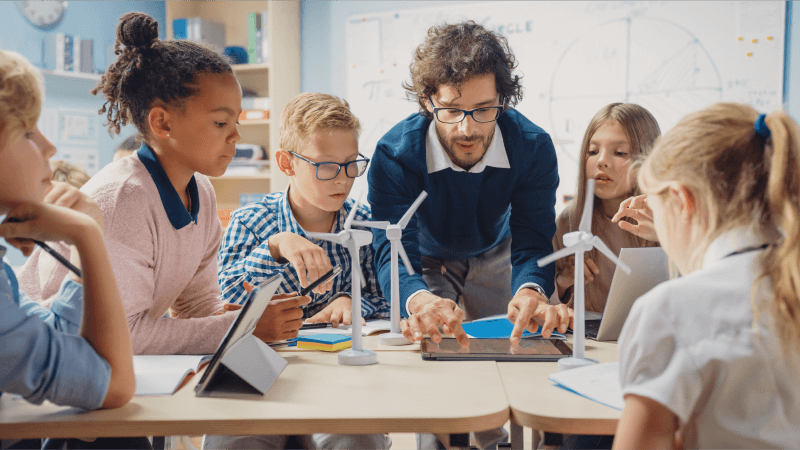
It’s January, and you notice that over the break your students seem to have forgotten all the routines they had been practicing since the start of the school year. Students are acting disrespectfully toward each other. During discussions, classmates are calling out when others are talking. They are showing they are annoyed with one another through unkind words and body language. It’s time for a reset. Your approach to discipline is a key tool in this endeavor because it is a way for students to relearn the expectations of the classroom. Here are five steps for using discipline in your classroom to help your students get back on track midyear.
Any procedure that has been working for you and your students needs to be reestablished after winter break. This can be done through a short review of expectations in which students reflect both on routines they did before break and on how those routines were done. My students often fall back into the habit of speaking out of turn after spending time at home where they haven’t needed to wait their turn to talk. Take a couple of minutes to let students practice having a conversation in which they raise their hand to signal they would like to speak. This practice can even be done with nonacademic information so all students feel included.
The new year is a chance to reflect on past practices. What practices have been happening in the classroom that have not been serving you or your students? Consider what would work better. If a procedure or routine isn’t working, now is the time to reset it and create a new routine. Perhaps your entrance time and warm-up work structure aren’t working. What parts are making it frustrating for those involved? Try reworking those routines in a way that will better suit all involved.
As you make changes, students will again be practicing how to engage in your classroom. As you notice students doing the actions you want to see in your community, commend them with specific wording. If you are currently practicing respecting others by getting warm-up work started in the morning so that everyone is ready for class, privately commend those students who are doing just that. For any students who find the new procedure tricky, privately remind them of the practice they have done in this area and what the expectations are now; then, allow them the opportunity to practice again.
Inevitably, students will make mistakes as they continue to learn and practice classroom procedures and routines. In the moment, remember to remain calm and direct. This communicates to students that you are still going to be in control even if they find controlling their own behaviors challenging. You will also want to brainstorm how to address behavior mistakes once students have regained control of their behavior. Will students meet with you at lunch to discuss their behaviors? Will they create plans with you for when they make a behavior mistake? How will you welcome them back to the group if they have taken a break? How might students ensure that they help others in the community feel important and valued, even after they make a mistake? Making a plan before any errors occur in the classroom will ensure both that you are prepared for any variable and that students will experience consistency with your response to misbehaviors.
There is no better time than now to start exactly where you are. Find the step that most resonates with you and begin there. You and your students can begin at any time of year to learn the procedures and routines needed to be successful not only in your classroom, but anywhere students engage with any other people or groups.
As with anything that requires practice, it will take time to reestablish old routines and establish new ones. Be patient with yourself and your students. Start with one item that you feel will have the most impact, and practice it with your students each day.
Hilary Woods is a seventh grade English teacher in New Hampshire and a Responsive Classroom consulting teacher.